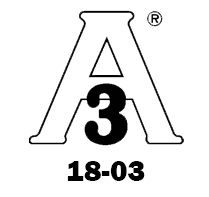3-A 18-03 Sanitary Standards
Sanitary Standards for Dairy
18-03 – “3-A Sanitary Standards for multiple-use rubber and rubber-like materials used as product contact surfaces in dairy equipment.”
Overview
3A standard has been formed by the US food and dairy industry, 3A Sanitary Standards Inc. It defines specifications and best practices for the project, manufacture, fitting, and use of hygienic equipment. It is globally established and intended to protect consumers from potential risks of food contamination.
18-03 of 3-A Sanitary Standards define requirements for food quality materials and suitability for cleaning and sanitising solutions. Consequently allowing equipment producers and/or users to select adequate material based on chemical, physical, and temperature resistance requirements.
Seals that are compliant with the standards include:

What does this standard cover?
It relates to the material and performance demands of rubber and rubber-like materials used as surfaces in contact with the product. Its primary purpose is to make sure that every part of the equipment is adequately sanitised and cleaned in order to prevent the formation of microbial charges. The main applications for these materials in conventional food and dairy processing are gaskets for pipelines, liquid hoses, and food conveyor belts.
What is the purpose of the 3-A Sanitary Standards?
The objective of the 3-A is to establish that the material is capable of resisting the frequent cycles of cleaning and sterilising. 3-A compliance tests are performed using simulants that replicate the most popular cleaning and sterilisation cycles. This is done at accelerated working conditions. Consequently, the intention is to examine the behaviours of rubber materials tested in contact with these substances.
Why does the 18-03 standard divide rubbers into different classes?
Rubber compounds are distinguished in different categories based on their chemical resistance and temperature. Class I and II determine compounds that can comfortably resist high temperatures or steam sterilisation (approx. +150°C and +121°C). Additionally, all classes must withstand cleaning and sterilisation with chemical solutions up to +82°C (CIP Cleaning). Furthermore, all compounds are required to pass the tests with:
- distilled water
- simulants based on alkaline and chlorine chemicals
- simulants with fat content
- aging tests in a hot air
Moreover, Class I and II rubber compounds must respond positively to the test with nitric acid.
Does the 3-A Sanitary Standards compliance offer superior advantages over the FDA?
FDA compliance is a basic requirement of the 3-A Standard. The migration testing and the formulation of compounds according to the methods required by the FDA must first prove that the ingredients of the composition are those approved by the FDA.
The FDA indicates the permissible “ingredients” for food contact elastomers, such as natural and/or synthetic polymers, and also the supplementary substances such as antioxidants, fillers, plasticisers, etc.
The 3-A Sanitary Standard, in turn, defines the additional performance demands to determine acceptance for these applications. In particular, the materials are required to meet the demands for compatibility and resistance to cleaning and sanitising substances. These tests are designed to assess the elastomer’s physical characteristics and to evaluate the performance of the elastomer under accelerated simulated dairy product contact and cleaning environment. In particular, the specific laboratory testing relates to air aging resistance, milk fat absorption, and resistance to cleaning and disinfecting substances.
What 3-A 18-03 Sanitary Standards products does M Barnwell Services provide?
- Camlock Gaskets
- Custom-made Components
- Hygienic Clamp Seals – HyClamp / Tri-Clover / Tri-Clamp / PolyClamp
- O Rings
- RJT Seals – Ring Joint Type O Ring Seals
- IDF Gaskets
- SMS 1149 Seals – Swedish Metric Standard
- X-Ray and Metal Detectable Seals
- and many more
If you require further information regarding our range of products and/or services, please contact a member of the team.
E & OE.